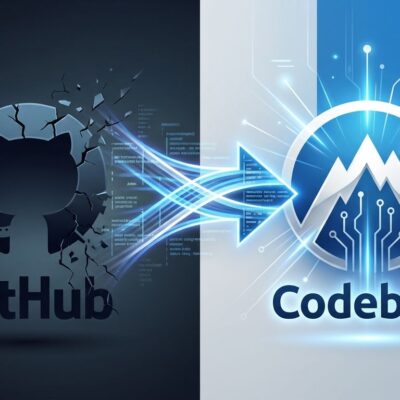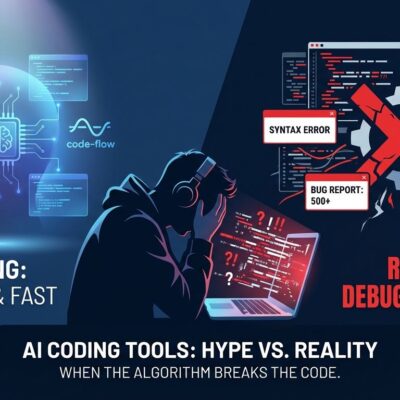
Y Combinator just backed a code editor that lets you gamble, swipe on Tinder, and watch TikToks while you wait for AI to generate code. It’s called Chad IDE, and when it launched on November 12, developers thought it was fake. It’s not. The founders claim they’re solving a real productivity problem: AI coding tools have awkward 1-5 minute wait times that kill flow state. Their solution? Integrate your vices directly into the IDE so you never have to leave. But here’s the question nobody at Y Combinator asked: is gamifying developer addiction actually solving the problem, or is Silicon Valley just too lazy to fix AI latency?
The Problem Is Real, The Solution Is Lazy
Chad IDE identified something genuine. AI coding tools do have frustrating wait times. According to the Y Combinator launch post, “AI coding takes 1-5 min between prompts—too long to ignore, too short to start something new.” Processing 128K tokens can exceed 8 seconds. Developers currently context-switch to their phones during these gaps, and when they do, they sometimes forget to return to the code session.
That’s a legitimate UX problem. But here’s where Chad IDE reveals Silicon Valley’s innovation bankruptcy: instead of fixing AI inference latency, they gamified the wait.
There are two paths forward when your tools are slow. Path one: reduce latency through streaming responses, caching, and token selection. Industry solutions exist that cut latency by 98%. Path two: accept the latency, integrate Stake gambling directly into your code editor, and call it innovation.
Silicon Valley chose path two. That’s not solving the problem. That’s giving up and slapping a gamification layer on developer addiction.
Context Switching Research Contradicts Chad’s Premise
Chad IDE assumes that keeping distractions inside the IDE prevents context switching. That assumption doesn’t survive contact with research.
UC Irvine research shows it takes 23 minutes to rebuild focus after an interruption. Interrupted work contains 25% more errors. Sophie Leroy’s research on “attention residue” found that when you switch tasks, part of your brain stays stuck on the original task for 30-60 minutes. Multitasking reduces productivity by up to 40%.
The research is clear: interruptions kill productivity. It doesn’t matter if the interruption comes from your phone or from an integrated Tinder window in your IDE. Switching from debugging to swiping is still context switching. You still need 23 minutes to rebuild focus after gambling on Stake. Chad IDE doesn’t eliminate context switching—it just moves the distraction from one window to another.
The founders claim early beta testing showed “15 minutes saved per hour,” but they admit this comes from “surveys and observations rather than formal research.” Against decades of context switching research showing 25% more errors and 23-minute recovery times, anecdotal survey data doesn’t hold up.
Not Rage Bait Defense Doesn’t Hold Up
TechCrunch reported that founder Richard Wang told them “the haters don’t get that it wasn’t intended to be rage bait.” But the product is literally named “Chad: The Brainrot IDE.” The website tagline reads: “Gamble while you code. Watch TikToks. Swipe on Tinder.” The launch generated massive controversy, and Chad IDE got 1,200 downloads in the first 48 hours driven by viral outrage.
You can’t integrate gambling into a work tool, name it “brainrot,” and claim you’re not courting controversy. The launch worked exactly as designed: viral outrage drove adoption.
Tech podcast host Jordi Hays put it bluntly: “Rage baiting is for losers. Products like Chad IDE have moved rage bait from a marketing gimmick to a product strategy.” He urged Y Combinator to discourage this approach among founders.
The reaction on X split between fascination and horror. Many developers initially assumed it was an April Fools’ joke released in November. TechCrunch’s headline summed it up: the product was “so wild, people thought it was fake.”
Innovation Bankruptcy: Gamify Don’t Optimize
Here’s what Silicon Valley should be building: faster AI inference engines, better latency optimization, improved streaming algorithms, more efficient token processing. Here’s what we got instead: gambling integrated into work tools, Tinder in your code editor, and “brainrot” as a product category.
Chad IDE is a symptom of innovation bankruptcy. When solving hard technical problems seems too difficult, Silicon Valley pivots to gamification and calls it innovation. Reducing AI inference latency requires distributed systems expertise, GPU optimization, and algorithmic improvements. Integrating a Tinder iframe into VS Code requires a weekend hackathon.
This isn’t the first time YC backed questionable products, but it raises a question: is this what Y Combinator should be funding? When did “reduce AI latency” become less fundable than “gamify developer addiction”?
Professionals or Dopamine Addicts?
Chad IDE’s premise treats developers as dopamine addicts who need constant stimulation during 1-5 minute wait times. The alternative view: developers are professionals who deserve tools that respect their time and attention.
The contrast is stark. Industry approach: fix the tools by reducing latency. Chad approach: fix the humans by accommodating addiction. Choosing to gamify rather than optimize sends a message: we think you’re too weak to wait 3 minutes without gambling. That’s insulting.
The Hacker News discussion revealed how divided developers are on this question. Some see genius in gamifying inevitable downtime. Others see dystopian product design that normalizes treating knowledge workers like slot machine addicts.
Chad IDE didn’t solve the AI latency problem. It just decided developers aren’t worth the effort to fix it properly. Silicon Valley can do better than this. The question is whether it will.











